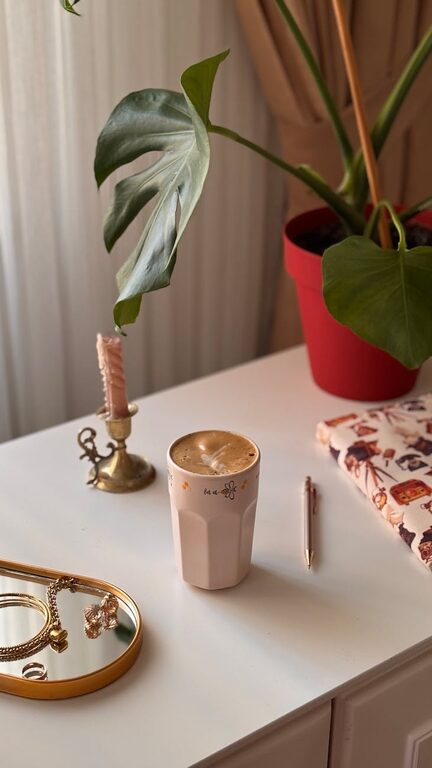
Creating a relaxing home workspace is essential in today’s world where many people spend hours working from home. A calm and comfortable environment helps reduce stress, increase focus, and improve overall productivity. Whether you have a dedicated room or a small corner in your living space, designing a workspace that feels inviting can make a big difference.
In this post, we’ll explore practical steps to create a relaxing home workspace that suits your needs.
Why a Relaxing Workspace Matters
Your workspace directly affects your mood and efficiency. A cluttered or uncomfortable space can cause distractions and stress, while a well-planned setup encourages concentration and creativity. Here’s why prioritizing relaxation in your workspace is important:
– Reduces Anxiety: Calming surroundings help keep stress levels low.
– Improves Focus: A peaceful environment minimizes distractions.
– Boosts Creativity: Comfort and relaxation promote innovative thinking.
– Enhances Work-Life Balance: Clearly defined spaces help separate work from personal life.
Now, let’s dive into how you can build a workspace that combines functionality with a peaceful vibe.
Choose the Right Location
The first step is selecting the best spot in your home for your workspace.
Consider Natural Light
Try to pick a space near a window where natural light flows in. Natural light helps improve mood and energy levels throughout the day.
Minimize Noise and Distractions
If possible, find a quiet area away from household traffic or noisy appliances. Noise-canceling headphones can also be a great addition.
Use Existing Space Wisely
Even a small corner of a room can work well. The key is to clearly define your workspace, which mentally prepares you for work.
Invest in Comfortable Furniture
Comfort is crucial to creating a relaxing workspace.
Choose an Ergonomic Chair
Supporting your back and maintaining good posture helps prevent discomfort during long hours. Look for chairs with adjustable height and lumbar support.
Select a Suitable Desk
Pick a desk size that fits your space but gives enough room for your computer, notes, and other essentials without clutter.
Consider Standing Options
A sit-stand desk or desk converter lets you change positions, which can reduce fatigue and increase alertness.
Organize and Declutter
A neat workspace contributes to mental clarity.
Use Storage Solutions
Shelves, drawers, and bins help keep supplies organized and off your desk surface.
Regularly Tidy Up
Spend a few minutes at the end of each day putting things away. This prevents clutter build-up and keeps your space inviting.
Personalize with Minimal Decor
Add a few decorative elements like a plant, a picture frame, or a small lamp to make the space feel welcoming without overwhelming it.
Choose Soothing Colors and Lighting
Color and lighting impact your mood and energy.
Opt for Calming Colors
Soft blues, greens, and neutral tones encourage relaxation and focus. Avoid loud, overly bright colors in your workspace.
Layer Your Lighting
Combine natural light with adjustable task lighting. A desk lamp with dimming options allows you to control brightness based on your needs.
Avoid Harsh Overhead Lights
Try to use indirect light sources or cover bright bulbs with diffusers to reduce eye strain.
Incorporate Nature Elements
Bringing nature indoors creates a soothing atmosphere.
Add Plants
Easy-care plants such as succulents, snake plants, or pothos improve air quality and add visual calm.
Use Natural Materials
Wooden desks, cork boards, or baskets give warmth and texture to your workspace.
Introduce Water Features or Scents
If space allows, a small tabletop fountain or a diffuser with relaxing essential oils like lavender can enhance the ambience.
Set Boundaries for Work and Breaks
Maintaining a routine helps your mind separate work time from relaxation.
Define Work Hours
Set clear start and end times for your workday to avoid burnout.
Schedule Breaks
Short breaks throughout the day refresh your mind. Use a timer or an app to remind yourself to stand, stretch, or step outside for fresh air.
Use Your Workspace Exclusively for Work
When possible, avoid using your workspace for non-work activities to strengthen the mental association with productivity.
Improve Air Quality and Temperature
Comfort includes fresh air and a comfortable climate.
Ventilate Regularly
Open windows or use an air purifier to keep air fresh, which supports better concentration.
Control Temperature
Set a temperature that feels comfortable to you. If needed, use fans or heaters to maintain a steady climate.
Personal Comfort Tips
Consider additional touches to enhance comfort.
– Keep Hydrated: Have a water bottle nearby.
– Use Noise Control: Play background music or ambient sounds if they help you focus.
– Keep Supplies Handy: Organize frequently used items within arm’s reach to avoid disruptions.
—
Creating a relaxing home workspace is a personal journey. The key is to build a space that feels comfortable, organized, and inspiring to you. By combining thoughtful design with healthy habits, you’ll enjoy improved focus, reduce stress, and create an environment where work feels less like a chore.
Take your time choosing elements that fit your style and needs. Your ideal workspace is one that welcomes you every day and helps you do your best work.




